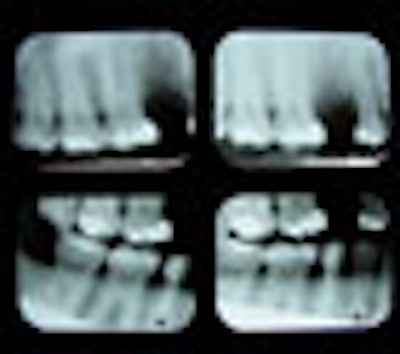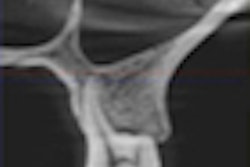
The American Academy of Oral and Maxillofacial Radiology (AAOMR) has issued a statement in response to a study published April 10 in the journal Cancer.
The study reported an association between dental radiographs and an increased risk of meningioma, a benign brain tumor arising in the brain. The statement, written on behalf of the AAOMR by Ernest Lam, DMD, PhD, University of Toronoto Faculty of Dentistry, and Jie Yang, DDS, MS, Temple University Kornberg School Dentistry:
This population-based case control study included almost 2,800 subjects, aged 20 to 79, located at various centers throughout the U.S. Subjects were asked to recall their frequencies of dental radiographic examinations during four age-periods: younger than 10 years of age, between ages 10 and 19, between 20 and 49 years, and older than 50 years of age.The researchers reported an increased risk of meningioma in individuals who received bitewing radiographs on one or more occasions per year in all age groups under 50 years of age. Subjects who received a panoramic examination were reported to be at an increased risk for meningioma if they were exposed under 10 years of age. No increased risk of meningioma was noted for subjects who received panoramic radiographs over the age of 10 or a full mouth series of intra-oral radiographs (which includes bitewings) at any age.
A number of irreconcilable data-collection and consistency problems highlight serious flaws in the study and render the conclusions invalid. One major weakness of this study was the requirement for subjects to recall their dental radiography history from decades ago when they were children. As recall is known to be highly unreliable, asking a subject to recall an event 50 years ago or more is likely considerably unreliable.
Second, bitewing radiographs (typically 2 to 4 x-ray exposures) were reported to place patients at a higher risk of meningioma than a full mouth series of radiographs (up to 20 exposures, 2 to 4 of which are bitewings); a finding that cannot be rationally reconciled from a radiobiological standpoint.
For almost 30 years, the ADA and the AAOMR have championed the use of selection criteria for dental radiographs. When radiographs are necessary, ionizing radiation must be controlled in such a way that the doses delivered are as low as reasonably achievable, balancing patient benefit with risk; the so-called "ALARA" principle.
Absorbed doses from dental radiography have declined upwards of 60% in recent years as a result of faster x-ray film speed, the development of digital sensor technology, x-ray beam collimation and patient shielding. Given that these and other factors were not known to the subjects or reported, it is impossible to recreate a dose-response relationship between the radiation doses subjects received and the development of meningioma.
Taken together, the methodological weaknesses of this study put the validity of any relationship between dental radiographs and meningioma into serious question. Oral and maxillofacial radiography is an important diagnostic tool in the armamentarium of the dentist, and the AAOMR continues to endorse its careful and judicious use in dentistry.



















